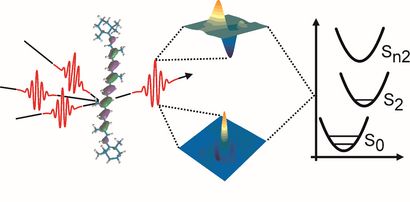CeNS Colloquium
Adolf-von-Baeyer-Hörsaal, Butenandtstr. 5-13, LMU
Date: 1.12.2017, Time: 15:30h
The functional roles of vibronic coupling in carotenoids
Prof. Jürgen Hauer, Technische Universität München
In π-conjugated chain molecules such as carotenoids, coupling between electronic and vibrational degrees of freedom is of central importance. It governs both dynamic and static properties, such as the timescales of excited state relaxation as well as absorption spectra. I will present a model, which treats vibronic dynamics in carotenoids on four electronic states in a physically rigorous framework. This model explains all features previously associated with the intensely debated S*-state. Additionally, we are able to incorporate findings from pump-deplete-probe experiments, which were incompatible to any pre-existing model.
Besides clarifying features in transient absorption spectra of isolated carotenoids, vibronic coupling also explains the ultrafast transfer rates between carotenoids and bacteriochlorophylls in the natural peripheral light-harvesting antenna complex (LH2) of purple photosynthetic bacteria. Its energy transfer dynamics are an ideal testing ground for models on structure-function relationship due to the well-determined molecular structure and ultrafast energy deactivation of LH2. The initial carotenoid-to-bacteriochlorophyll energy transfer step after visible light excitation was long considered to follow the Förster mechanism, even though observed transfer times as short as 40 femtoseconds are hard to accommodate by Förster theory, as the moderate coupling strengths found in LH2 suggest much slower transfer within this framework. I will present data on LH2 from Phaeospirillum molischianum, with special regards to the split Qx-band in this system. Vibronically mediated transfer explains both the ultrafast carotenoid-to-B850 transfer, and the almost complete lack of transfer to B800. These results are beyond Förster-theory, which predicts an almost equal partition between the two channels.


